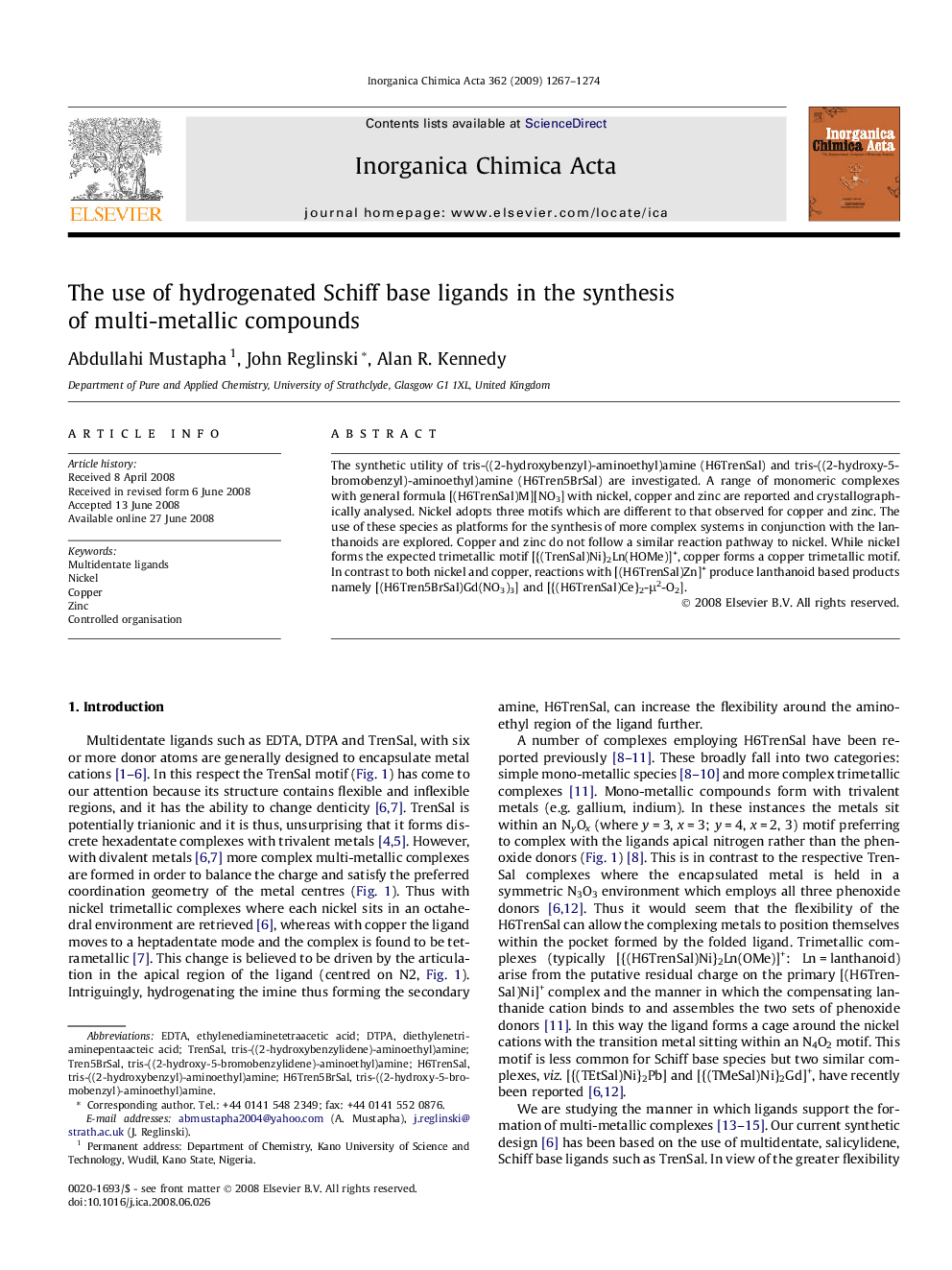| Article ID | Journal | Published Year | Pages | File Type |
|---|---|---|---|---|
| 1307063 | Inorganica Chimica Acta | 2009 | 8 Pages |
The synthetic utility of tris-((2-hydroxybenzyl)-aminoethyl)amine (H6TrenSal) and tris-((2-hydroxy-5-bromobenzyl)-aminoethyl)amine (H6Tren5BrSal) are investigated. A range of monomeric complexes with general formula [(H6TrenSal)M][NO3] with nickel, copper and zinc are reported and crystallographically analysed. Nickel adopts three motifs which are different to that observed for copper and zinc. The use of these species as platforms for the synthesis of more complex systems in conjunction with the lanthanoids are explored. Copper and zinc do not follow a similar reaction pathway to nickel. While nickel forms the expected trimetallic motif [{(TrenSal)Ni}2Ln(HOMe)]+, copper forms a copper trimetallic motif. In contrast to both nickel and copper, reactions with [(H6TrenSal)Zn]+ produce lanthanoid based products namely [(H6Tren5BrSal)Gd(NO3)3] and [{(H6TrenSal)Ce}2-μ2-O2].
Graphical abstractThe synthetic utility of Tris-((2-hydroxybenzyl)-aminoethyl)amine (H6TrenSal) and Tris-((2-hydroxy-5-bromobenzyl)-aminoethyl)amine (H6Tren5BrSal) are investigated. A range of monomeric complexes with general formula [(H6TrenSal)M] [NO3] with nickel, copper and zinc are reported and crystallographically analysed. The use of these species as platforms for the synthesis of more complex systems in conjunction with the lanthanoids are explored. While nickel forms the expected trimetallic motif [{(TrenSal)Ni}2Ln(HOMe)]+, copper forms a copper trimetallic motif. In contrast [(H6TrenSal)Zn] produce lanthanoid based products namely [(H6Tren5BrSal)Gd(NO3)3] and [{(H6TrenSal)Ce}2−μ2-O2].Figure optionsDownload full-size imageDownload as PowerPoint slide
